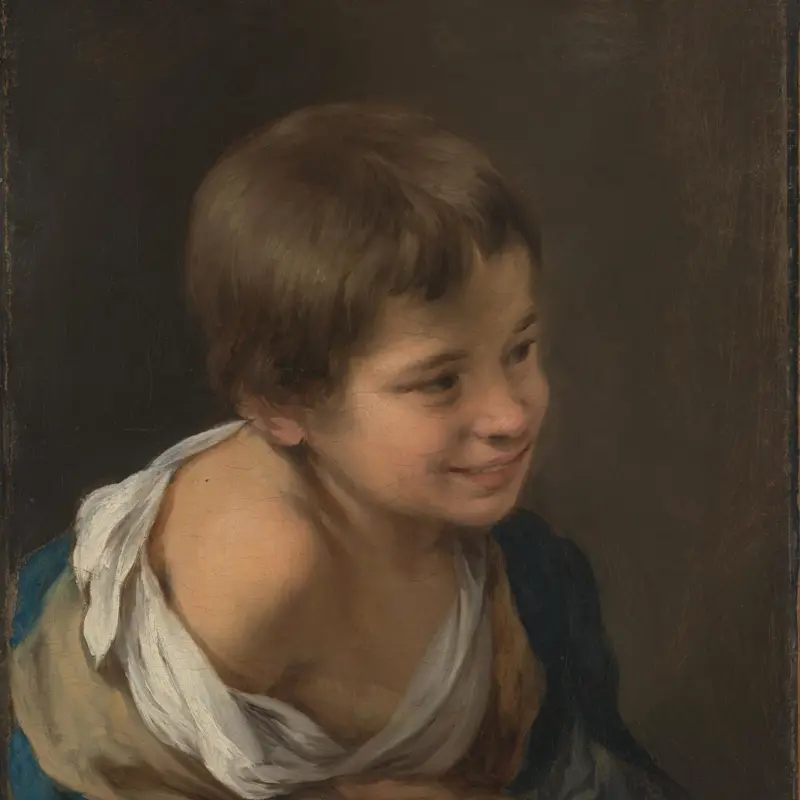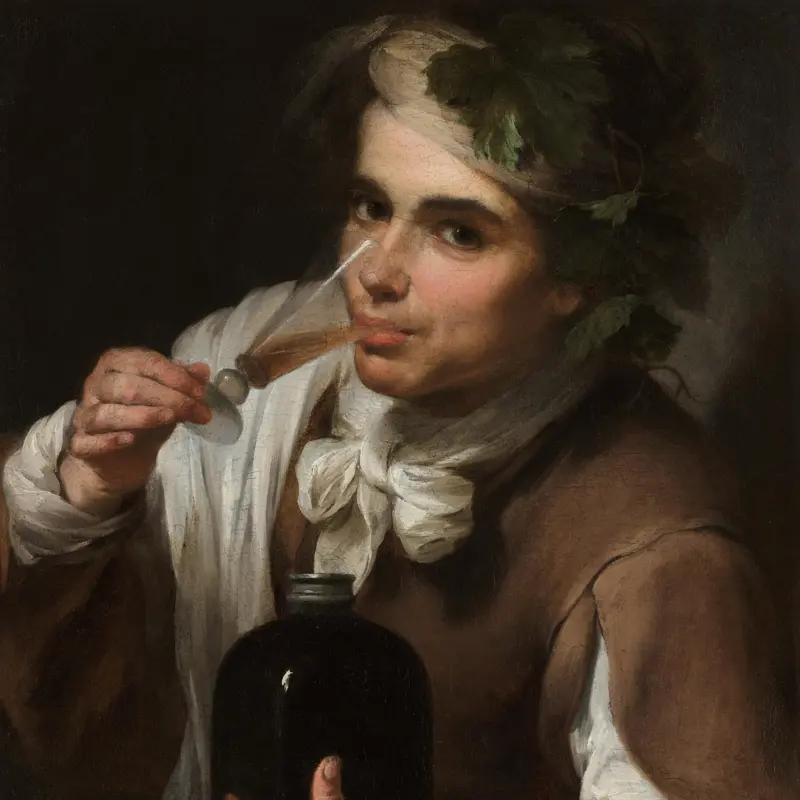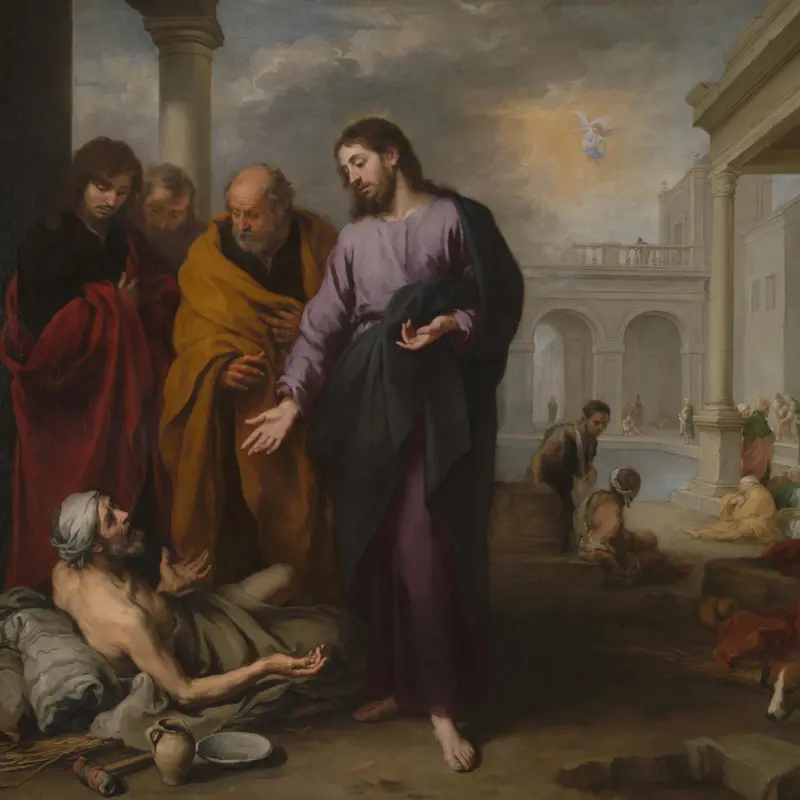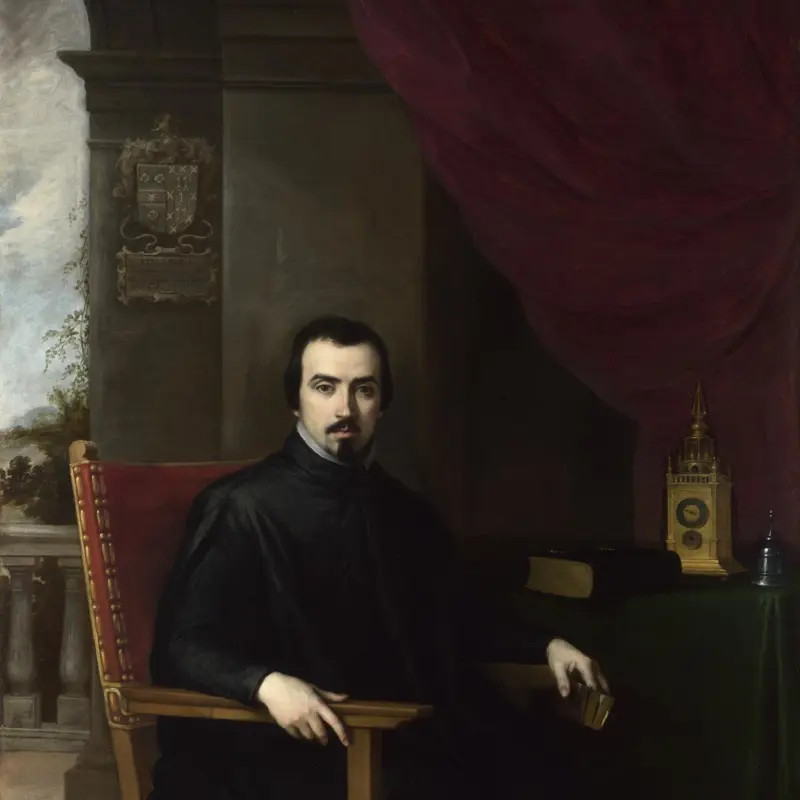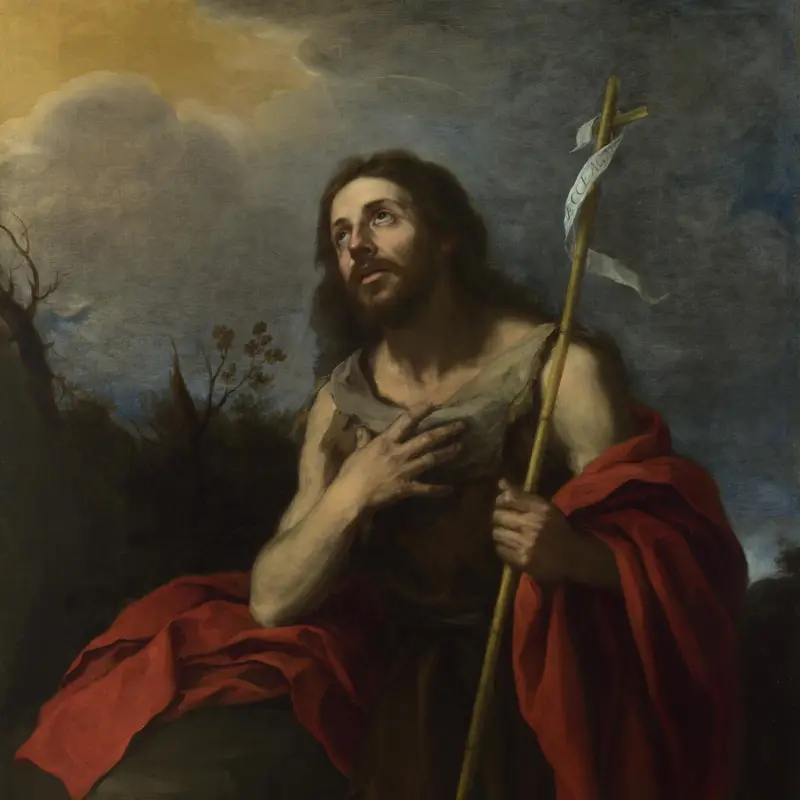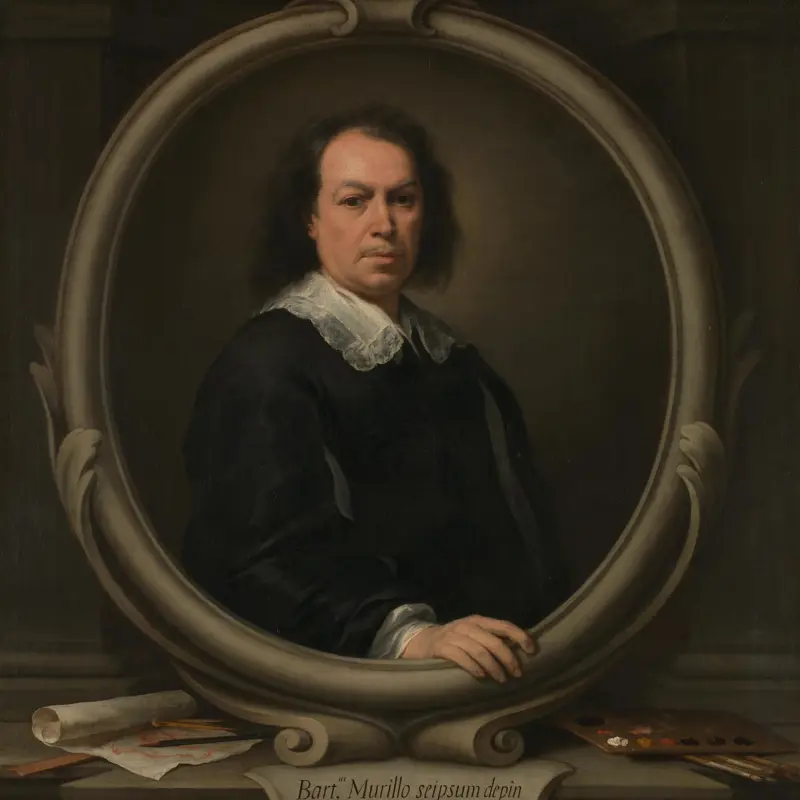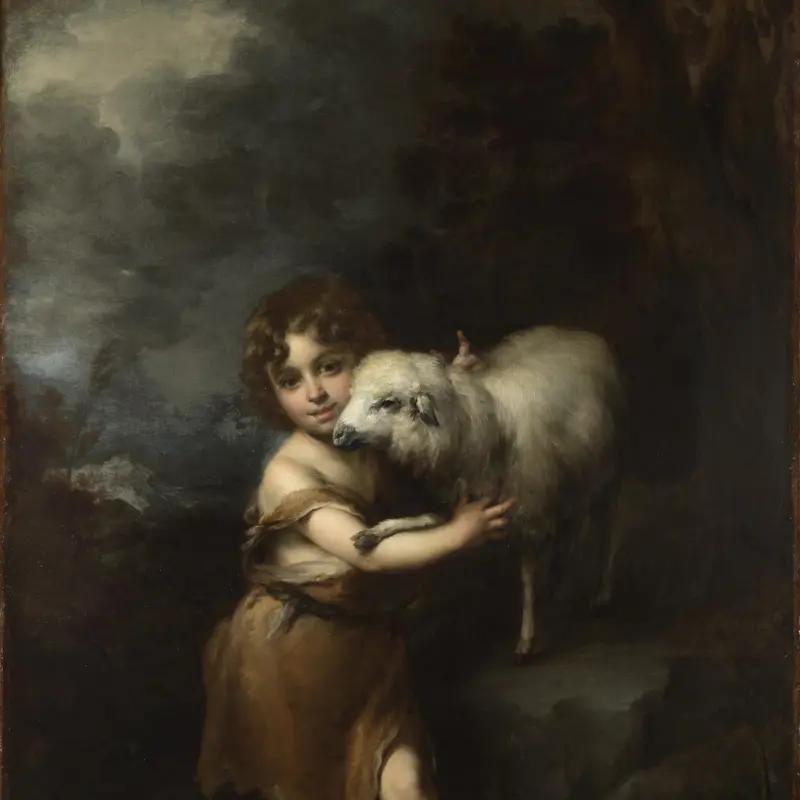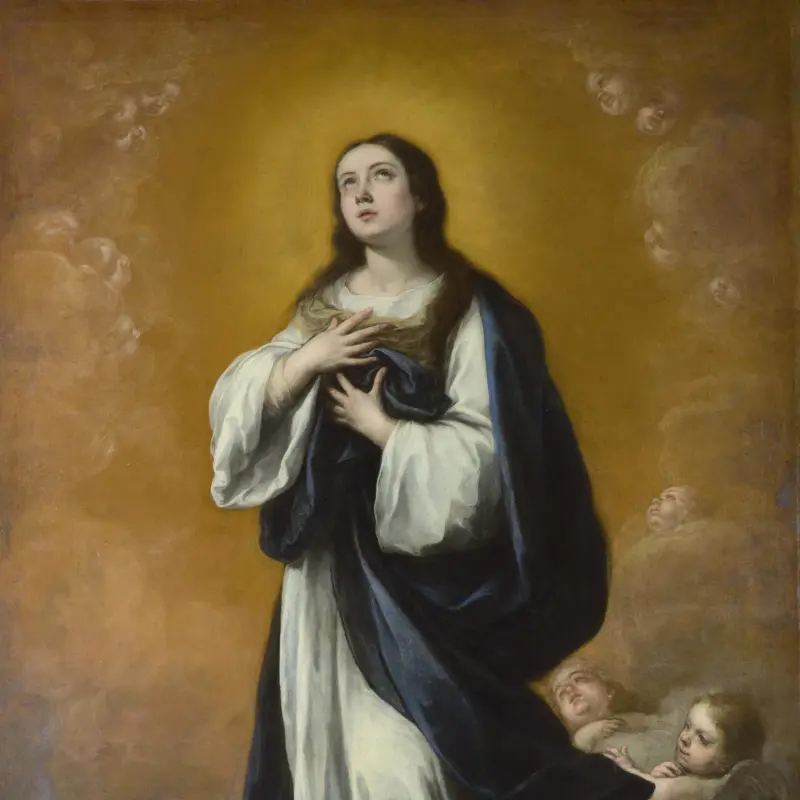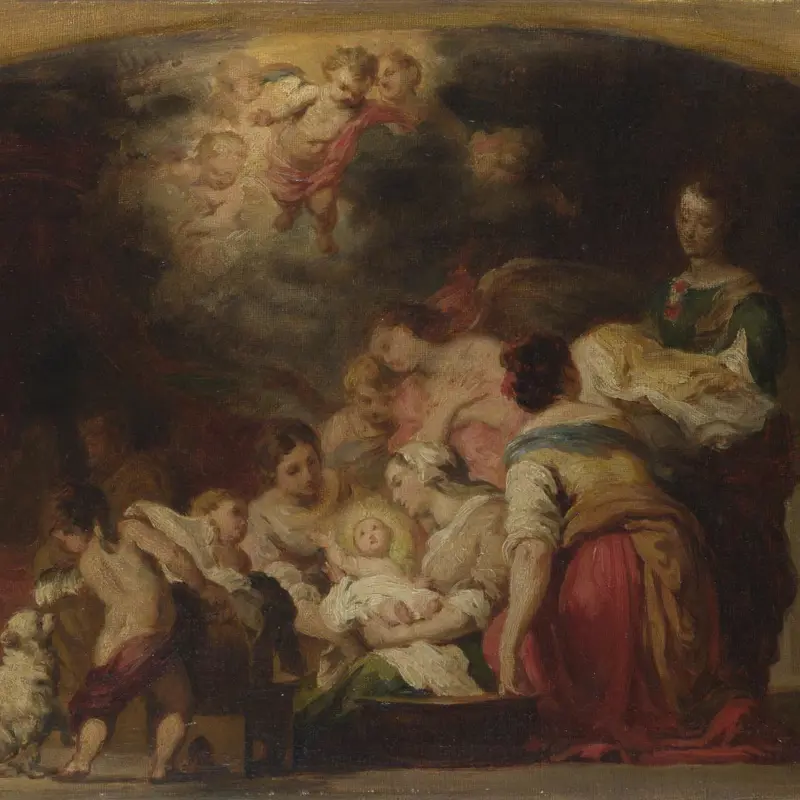Bartolomé Esteban Murillo, 'The Heavenly and Earthly Trinities', about 1675-82
About the work
Overview
This painting illustrates the belief that Christ was both human and divine: the embodiment of the ‘Two Trinities’. At the centre of the composition the Christ Child forms part of the Heavenly Trinity with the dove of the Holy Ghost and God the Father above, and part of the Earthly Trinity with his human parents, Mary and Joseph.
The scene is not based on a particular biblical event, though a story in the Gospel of Luke echoes its theme. Aged 12, Christ disappeared after a trip to Jerusalem; he was eventually found in the Temple debating with religious scholars. When confronted by his anxious parents Christ spoke simply of his divine mission.
Mary gazes lovingly at her son. Joseph looks towards us, inviting us to adore Christ, who stands on a sharp-edged rock. This is possibly intended to symbolise an altar or may refer to biblical descriptions of Christ as the ‘cornerstone’ upon which God’s household would be built.
Key facts
Details
- Full title
- The Heavenly and Earthly Trinities ('The Pedroso Murillo')
- Artist
- Bartolomé Esteban Murillo
- Artist dates
- 1617 - 1682
- Date made
- About 1675-82
- Medium and support
- Oil on canvas
- Dimensions
- 293 × 207 cm
- Acquisition credit
- Bought, 1837
- Inventory number
- NG13
- Location
- Room 30
- Collection
- Main Collection
- Previous owners
- Frame
- 17th-century Spanish Frame
Provenance
Additional information
Text extracted from the ‘Provenance’ section of the catalogue entry in Neil MacLaren, revised by Allan Braham, ‘National Gallery Catalogues: The Spanish School’, London 1988; for further information, see the full catalogue entry.
Exhibition history
-
2018Bartolomé Esteban Murillo (1618-2017)Museo de Bellas Artes de Sevilla29 November 2018 - 17 March 2019
Bibliography
-
1715A. Palomino, El museo pictorico, y escala óptica, 3 vols, Madrid 1715
-
1775R. Twiss, Travels Through Portugal and Spain, in 1772 and 1773, London 1775
-
1800J.A. Ceán Bermúdez, Diccionario histórico de los mas ilustres profesores de las bellas artes en España, Madrid 1800
-
1824W. Buchanan, Memoirs of Painting: With a Chronological History of the Importation of Pictures by the Great Masters into England Since the French Revolution, London 1824
-
1842Mrs Jameson, A Handbook to the Public Galleries of Art in and Near London, London 1842
-
1843F. Summerly, Felix Summerly's Hand Book for the National Gallery, London 1843
-
1845G. Foggo, A Catalogue of the Pictures in the National Gallery with Critical Notes, London 1845
-
1845T. Penrice, Letters Addressed to the Late Thomas Penrice, Esq., while Engaged in Forming His Collection of Pictures, 1808-1814, ed. J. Penrice, Yarmouth 1845
-
1847R.N. Wornum, Descriptive and Historical Catalogue of the Pictures in the National Gallery, London 1847
-
1848W. Stirling-Maxwell, Annals of the Artists of Spain, London 1848
-
1867A.A. Lavice, Revue des musées d'Angleterre, Paris 1867
-
1873W. Stirling-Maxwell, Essay Towards a Catalogue of Prints Engraved from the Works of D. Rodriguez de Silva Y Velazquez and B. E. Murillo, London 1873
-
1913A. Mayer, Murillo, Stuttgart 1913
-
1952Maclaren, Neil, National Gallery Catalogues: The Spanish School, London 1952
-
1970N. MacLaren and A. Braham, The Spanish School, 2nd edn, London 1970
-
1981D.A. Íñiguez, Murillo. Su vida, su arte, su obra, Madrid 1981
-
1981A. Braham, El Greco to Goya: The Taste for Spanish Paintings in Britain and Ireland (exh. cat. The National Gallery, 16 September - 9 November 1981), London 1981
-
1983M. Helston, Spanish and Later Italian Paintings, London 1983
-
1986E. Young, 'The Two Trinities in the School of Seville and an Unknown Version by Zurbarán', Apollo, CXXIII/287, 1986, pp. 10-3
-
1988Maclaren, Neil, revised by Allan Braham, National Gallery Catalogues: The Spanish School, 2nd edn (revised), London 1988
-
1989N. Glendinning, 'Nineteenth-Century British Envoys in Spain and the Taste for Spanish Art in England', The Burlington Magazine, CXXXI/1031, 1989, pp. 117-26
-
2000G. Finaldi, The Image of Christ, London 2000
-
2001
C. Baker and T. Henry, The National Gallery: Complete Illustrated Catalogue, London 2001
-
2002J. Conlin, The Origins and History of the National Gallery 1753-1860, Phd Thesis, University of Cambridge 2002
About this record
If you know more about this work or have spotted an error, please contact us. Please note that exhibition histories are listed from 2009 onwards. Bibliographies may not be complete; more comprehensive information is available in the National Gallery Library.

